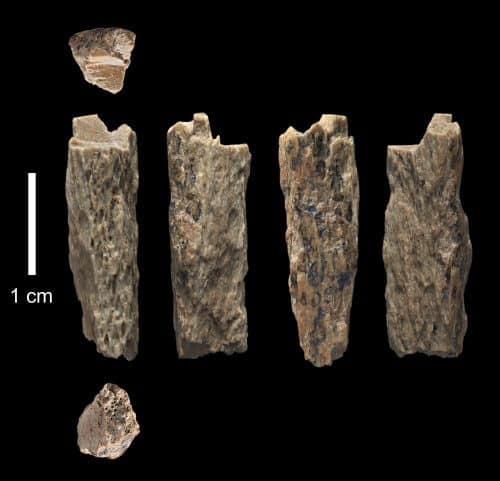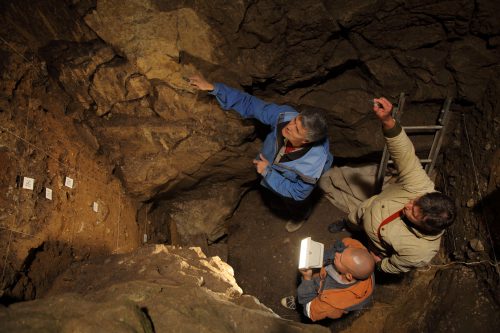Part of the genetic sequence of the Denisovans was preserved in the ancestors of the natives of Australia and Melanesia today, due to hybrid breeding. Now a remains of an arm or leg bone of a girl has been found which testified that some degree of interbreeding was also possible between the Denisovans and the Neanderthals

Together with the sister group - the Neanderthals, the Denisovans are the closest extinct relatives of humans alive today. While the Neanderthals are known to us from countless archaeological digs and even DNA tests from across Eurasia, evidence for the existence of the Denisovans is based on research findings in one cave in Russia - the Denisova Cave in Siberia. The cave was inhabited over the years by Denisovans, Neanderthals and modern humans.
The Denisovans diverged from the lineage leading to modern humans about 800 years ago and from the lineage leading to Neanderthals about 640 years ago (Wikipedia)
In fact, almost nothing is known about the population, because our knowledge of the Denisovan man comes from fossil fragments found in Denisova Cave. Part of the genetic sequence of the Denisovans was preserved in the ancestors of the natives of Australia and Melanesia today, apparently due to hybrid breeding. Now a remains of an arm or leg bone of a girl has been found which testified that some degree of interbreeding was also possible between the Denisovans and the Neanderthals.

"We knew from previous studies that the Neanderthals and the Denisovans had to occasionally give birth to children who would be of mixed race," says Vivian Salon, a researcher at the Max Planck Institute for Evolutionary Anthropology in Leipzig, Germany, and one of the three authors of the study published in the journal Nature "but I never thought we would be lucky to find Common descendants of both groups."
The researchers discovered a long bone fracture of a girl whose age was estimated to be about 13 years," said Benes Viola from the University of Toronto, another partner in the study. The bone fragment was found in 2012 in Denisova Cave by Russian archaeologists. It was brought to Leipzig for genetic analysis, after it was determined that the bone came from a human source based on the composition of the proteins in the bone.
"The interesting aspect of the genome we tested is that it allows us to test what a descendant of a Neanderthal mother and a Denisovan father looks like," explains Fabrizio Maffsoni at the Max Planck Institute for Evolutionary Anthropology. The researchers determined that the mother was genetically closer to the Neanderthals who lived in Western Europe than to the Neanderthal man who lived earlier in Denisova Cave. This provides proof for the assumption that Neanderthals migrated between Western and Eastern Eurasia tens of thousands of years before their disappearance.
In fact, the father was a Denisovan, but he also had a Neanderthal ancestor in the family tree, and thus from one genome we can identify several events of interbreeding between Neanderthals and Denisovans, says Benjamin Vernot, also from the Max Planck Institute for Evolutionary Anthropology and the third author of the study.

"It is amazing to discover a genetic sequence of a mixed descendant of Neanderthals and Denisovans, among a handful of ancient humans whose genomes have been sequenced" explains Svante Pabo, director of the Department of Evolutionary Genetics at the Max Planck Institute for Evolutionary Anthropology, and the lead author of the study (as well as the winner of the 2017 Dan David Prize for the Dimension of Past Time ). "Neanderthals and Denisovans didn't have many opportunities to meet, but when they did, they mated often - much more than we previously thought."

For the announcement of the Max Planck Institute
More of the topic in Hayadan:
- Two of the researchers who strengthened the connection between the sciences and archeology won the Dan David prize for the dimension of past time
- What caused the extinction of the Neanderthals?
- Modern man has lost genes that were on the Y chromosome of the Neanderthals
- Did Neanderthal man and Homo sapiens unite in Israel?

One response